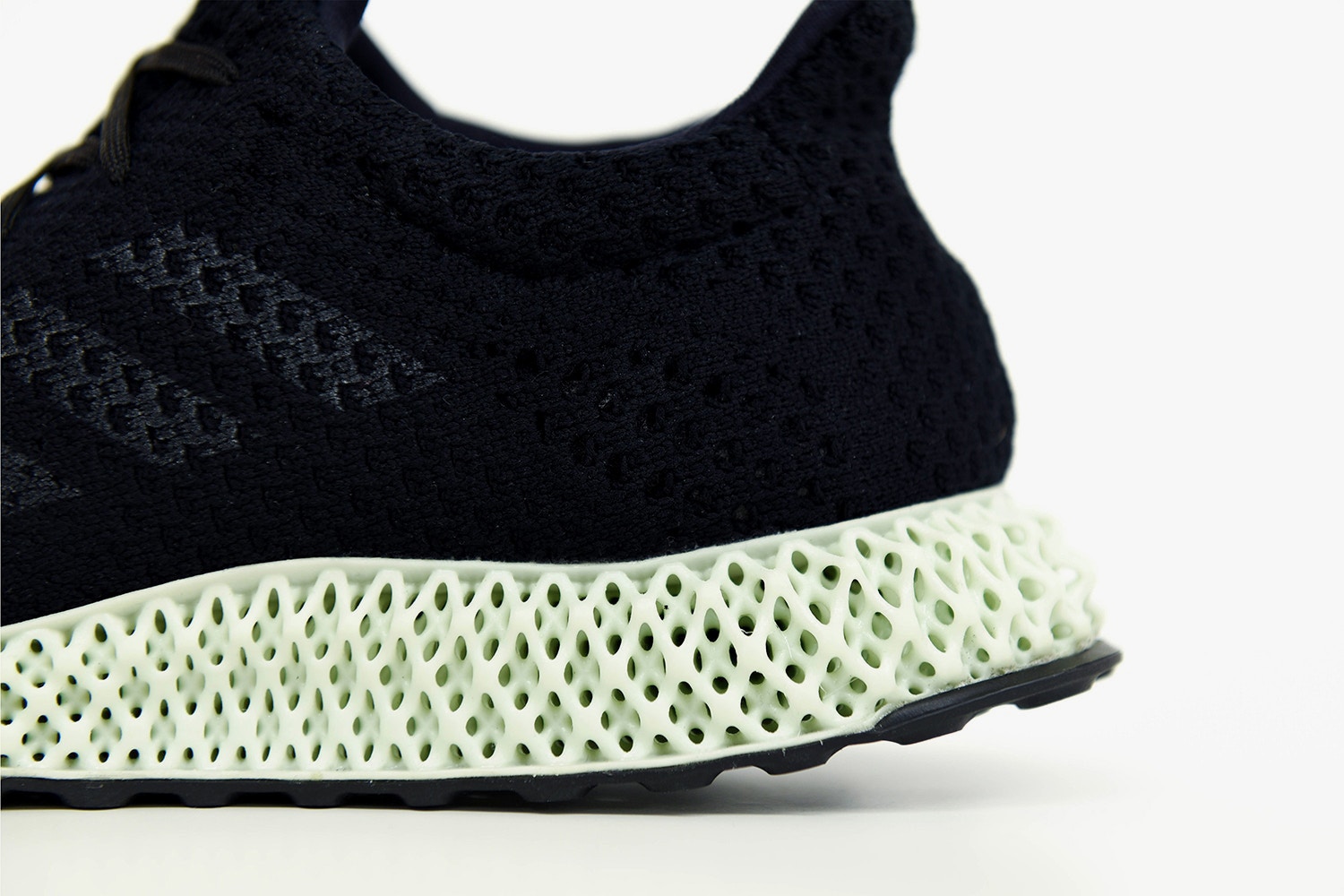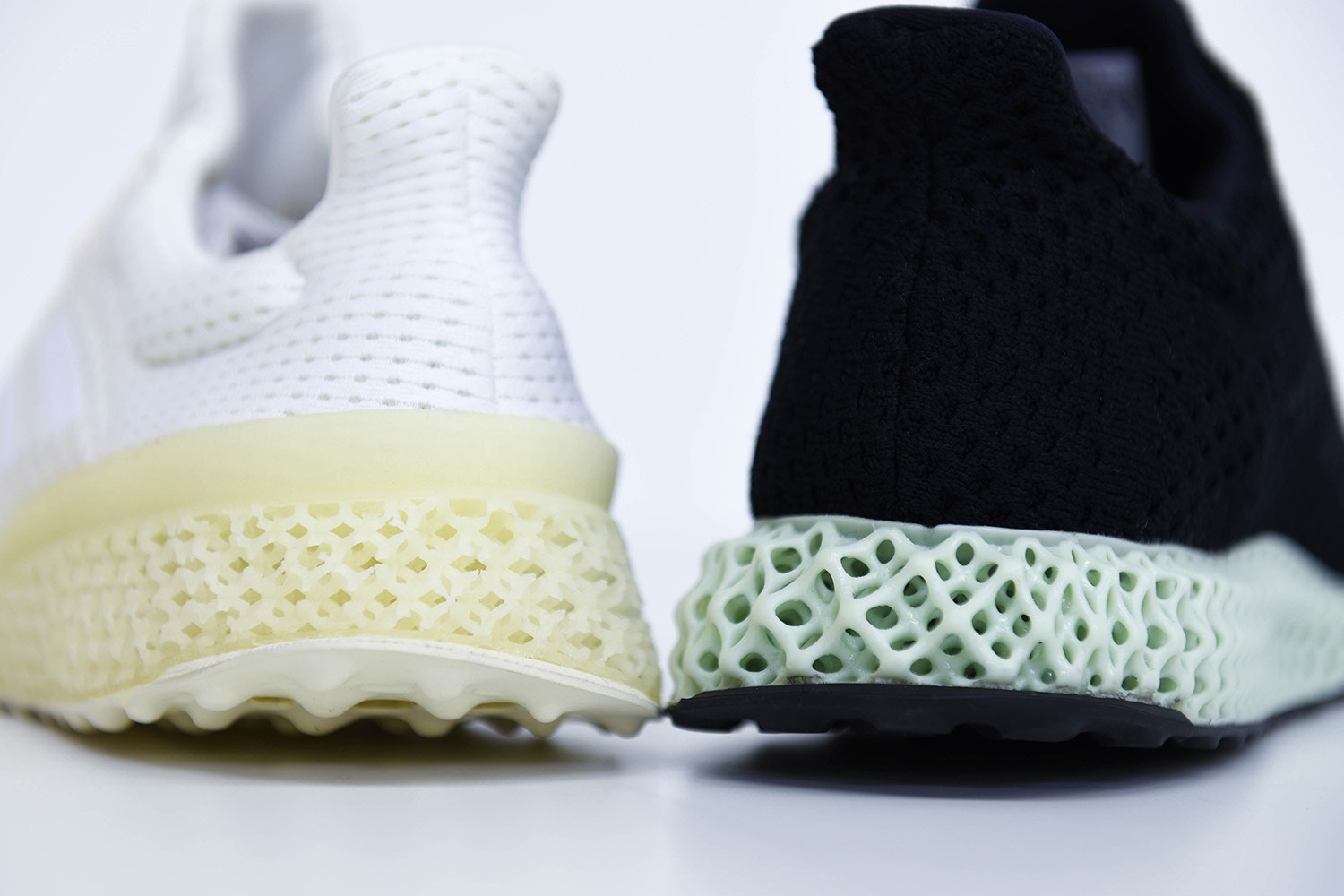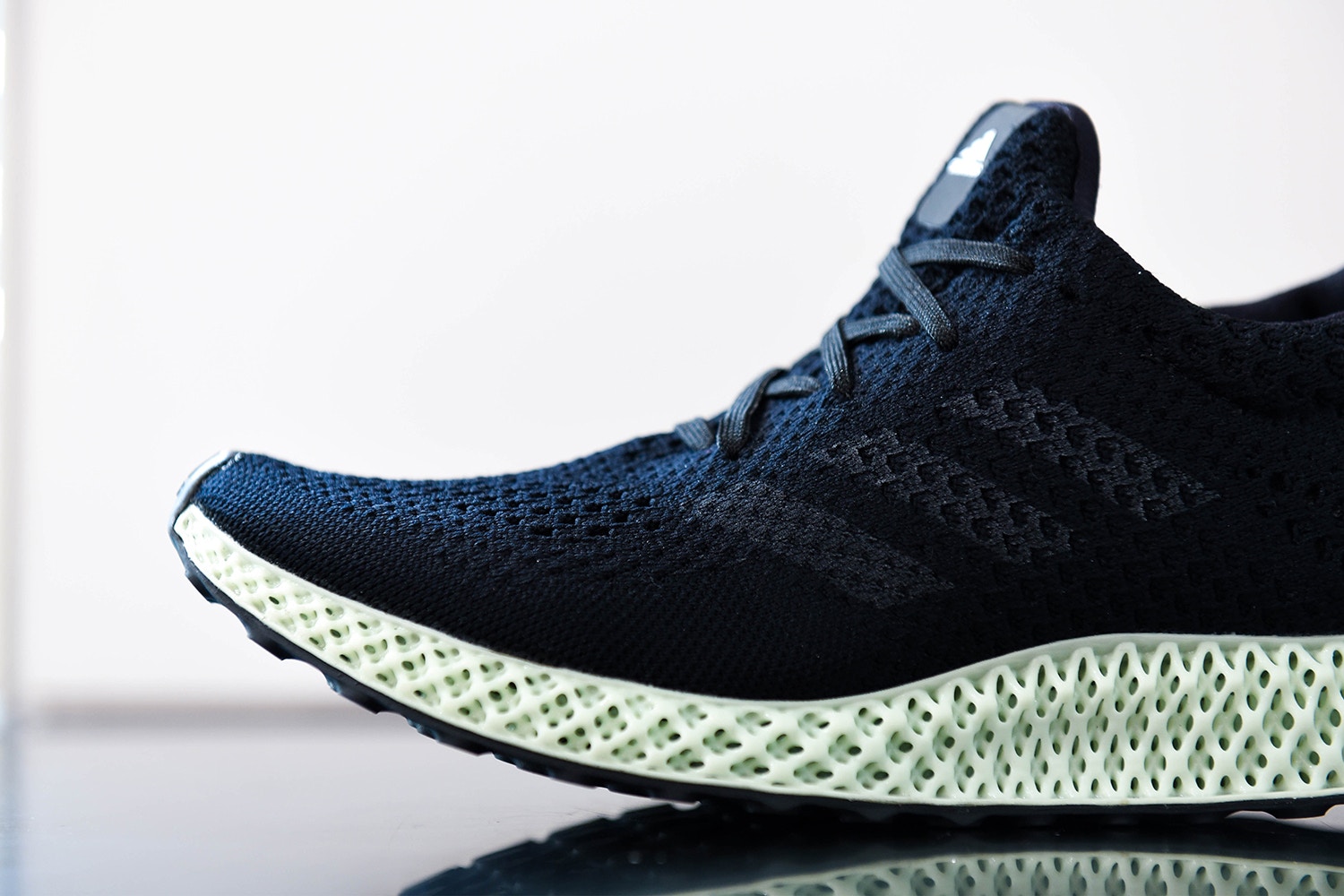Athletic footwear has never been bigger from a business and cultural perspective. The fine line between fashion and streetwear as we all know and witnessed has become one huge and fluid world. Each side is continually dipping in and referencing from each other. When things get too big, too popular, this old head generally loses interest. But on the positive side, we’re pushing boundaries on the technical and performance front like never before.
I did a piece a few months ago on the Futurecraft 3D by adidas. In just a few short months, the wheels of innovation have continued to turn with hand-over-fist changes that have gone far beyond simple branding, material, or color updates. We’re now moving far beyond the days of simply rehashing old classics and really entering a new era.
The Futurecraft 3D was an easy shoe to wear every day and it was a consistent part of my rotation. There really wasn’t a lot to nitpick about, and the comfort levels rivaled that of BOOST. The fit and durability were my biggest concerns but were unfounded. Pricing was perhaps the sticking point, and it could have been more aggressive. But having said that, consumers are much less price sensitive these days, and people are more than willing to drop a few bills for a unique experience or have some fire on their feet for Instagram. I could definitely see a market for a USD 700+ 3D Futurecraft.
All that talk about the Futucraft 3D is to set the stage for the Futurecraft 4D. But you can’t talk about the present or future without recognizing the past.
AESTHETICS / DESIGN
If you hold the 4D next to a 3D, the newer 4D feels not just like an update but an exponential one. The level of refinement is much greater than a simple iterative update. The Ultraboost upper has always been well-received by consumers, and the cageless 4D version features a different weave and tensile strength in the yarn.
A complaint of older un-caged UltraBOOST models was the lack of upper support, but the 4D effectively hugs your foot. There are different methods of tightening the fit either through a smaller upper last than the tooling/outsole or through the yarn itself. I’m not 100% certain on this weave relative to some of adidas’ football (soccer) offerings with the laceless upper, but it’s for sure a tighter weave.
When it comes to the midsole, you see a lot of updates from the 3D to the 4D. The 3D’s midsole was a bit flat while the 4D features more volume and dimensions in the midsole which provides a progressive and futuristic look.
Every piece of the midsole structure is perfectly shaped, and you won’t see any bubbles or unfinished edges. The grid structure is also meant to align with the biomechanics of the foot which means a tighter structure in the forefoot with greater width expansion, but also thicker structure in the heel as is the case with most traditional running shoes.
Some of these details were present in the 3D, but the 4D has perfected everything.
FUNCTIONALITY / CONSTRUCTION

The 3D was already an impressive shoe, and it definitely stood up next to various BOOST offerings. But the 4D is decidedly a step-up. They’re more flexible, and the colors are already better overall. Based on my experiences this special material would take any CYMK color before it is processed. The midsole coloration is different from most EVA cushioned running shoes. There’s a more integrated color injection which results in a more vivid product. There may be potential difficulties in the future with two or more colors in the midsole (i.e., two-toned forefoot and midfoot colors). Perhaps there’s a solution in the future to put different printed pieces together.
If you take a closer look at the midsole, the stiffness is not only based on the materials but also the way the grid structure is laid out. Depending on the dimensions and spacing, you could potentially control the amount of stiffness. Which means you can get softer cushioning or more responsive cushioning.
SUMMARY

What a game-changing shoe. I wrote that sentence a couple months and wasn’t expecting to use it again. There is no doubt this technology will change the entire supply of footwear. Again, instead of molding sizes in Asia, you can produce by demand in the location where your consumers are.
Looking into the details mentioned above there are additional ways to customize it to the needs of every individual based on features, such as foot size, cushioning, and foot shape. I guess that is the fourth dimension. For adidas as a footwear brand, to the end consumer, it’s truly win-win.
Maybe pricing and lead time will be the only challenging factor this minute, but that will be solved in along the process like any other invention in any other industry.
With such ground-breaking innovations (including the 3D), I’m interested to see how everything will be managed amongst markets and consumers.
The drops thus far have included:
the white 3D version with 100 units
then the 3D black version with 300 units
to the 4D version with another 300 units
Not many consumers have experienced or even seen the 3D in person, so it seems a bit hasty to jump into 4D territory. From a brand perspective, I know it was important to claim the space before any other brand with similar innovations.
But now it really comes down to the lifecycle management of each innovation itself and how this can be commercialized and stretched. Its rumoured there will be another 5,000 pairs of the 4D by the end of the year – I thought why don’t you penetrate the market with the 3D first with the branding, material, and color game as mentioned at the very beginning of my article. That is at least four seasons of healthy sales before looking what can be done with the 4D starting in the second or third season of the 3D.
Not knowing all the production details but in the ideal world both innovations should last couple years and increase not only the brand’s perception but also the commercial contribution. So down the line it’s about stretching the full potential of the silhouette and innovation to the fullest.
I want to be very transparent with my thoughts – looking at BOOST, every category that struggles with sales add BOOST to their products in the hope that will get the attention that BOOST provided in its prime. But shouldn’t it be integrated and used in the best products at the highest price points? When I see golf shoes with BOOST components, I just scratch my head from both a functional and branding perspective.
From another angle at both intros – obviously, the company that communicates such innovation drive its value in the stock market with its future perspective.
It’s time to see how the competitors stack up, what innovations they bring to the table and ultimately, how consumers will benefit from the progression of the footwear industry.
This one is for you GARY!
Andy Chiu has been an avid sneaker collector since 1991. Making the trip from his native Germany to the ’92 Olympics, he was inspired by the U.S. Dream Team’s dominating performance in Barcelona — and of course the shoes on their feet. While Chiu’s initial experiences in the professional world took him to L’Oreal and Mercedes-Benz, this love for footwear saw Chiu return to his first love. Joining the industry though adidas Originals, he introduced adidas Originals’ Consortium range in Spring/Summer 2007 as well as other highly-influential projects, including a HYPEBEAST x adidas x Solebox project at the adidas Performance Division. Soon after, he joined PUMA, heading up their motorsports business.
Right after Chiu served as German beer brand Warsteiner’s brand & creative director, he became director of adidas Originals and Actionsports in Japan.
Every insight written and stated in this article are purely his personal point of view and does NOT reflect any opinion of any other party.
You can get more information on him through his Instagram account.

